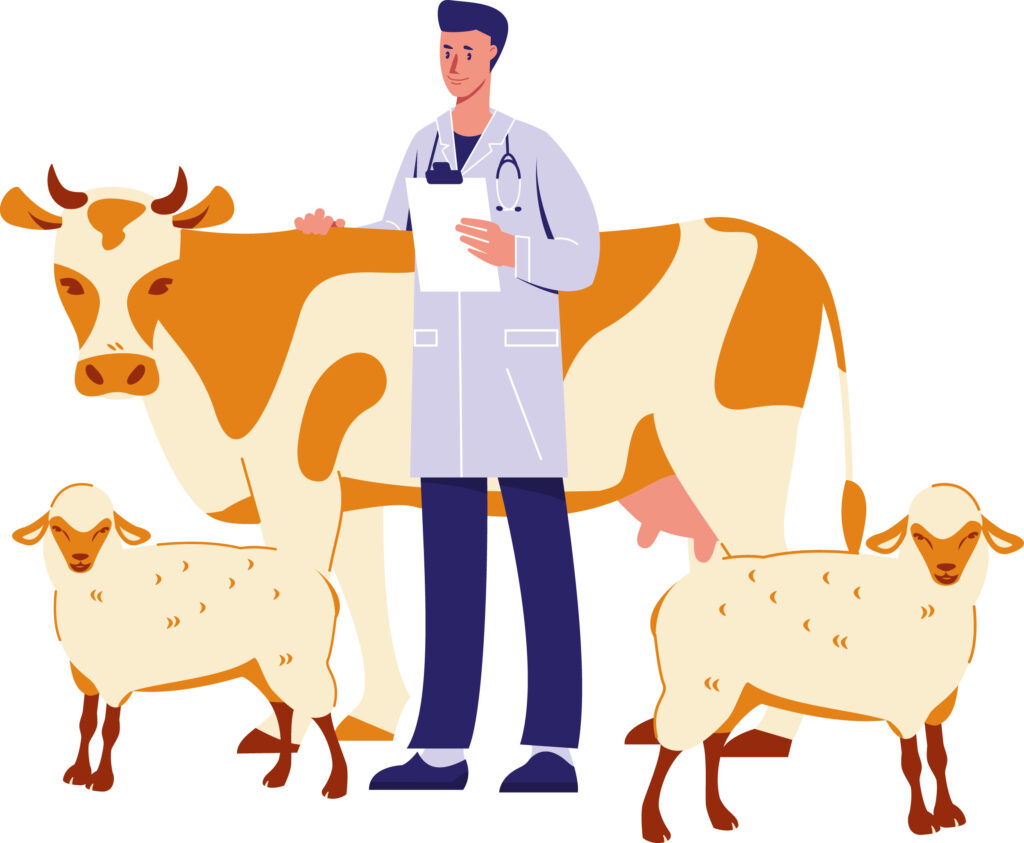Home » The classification of veterinary medicines in Ireland

The classification of veterinary medicines in Ireland is undergoing significant changes due to the implementation of EU Regulation 2019/6. In addition, changes to national classification categories of supply are also being implemented. In this article, Dr J. G. Beechinor, Director of Veterinary Services at the HPRA, provides an overview of the new requirements in both instances.
From 2007 until 2022, a relatively complex system for the classification of veterinary medicines existed nationally, with seven legally-specified categories of supply. These ranged from ‘veterinary practitioner only’ being the most restrictive category to ‘companion animal medicine’ designation being the least restrictive category. The category of supply was clearly identifiable on the product packaging and labelling. The classification system changed in January 2022 with the application of Regulation (EU) 2019/6 (referred to as ‘the Regulation’ hereafter). While the Regulation came into effect on 28 January 2019, it applied in all EU Member States from 28 January 2022. Complementary national legislation, which was adopted in the interim, has also impacted the situation. The nature, timing and impact of these changes are outlined below. Note that this article is not a definitive legal interpretation of the position but rather is provided as an explanatory guide to help understanding.
The Regulation requires that the following categories of veterinary medicines be subject to prescription control throughout the EU:
A significant impact of the EU legislation is that the most restrictive category of supply available is that of veterinary prescription supply. While there are veterinary medicines that must only be administered by a veterinary practitioner (for example anaesthetics, injectable oncology drugs), the restrictions that apply to these products are outlined as statements or warnings within the Summary of Product Characteristics (SPCs) and package leaflets. In accordance with the Regulation’s labelling requirements, the method of supply will normally be documented on the SPC and package leaflet (in this case, the products concerned will be categorised as supply under veterinary prescription even if they are only to be administered by a vet). Save in exceptional cases will the route of supply of a veterinary medicine appear on the product labelling or outer packaging as the labelling requirements preclude this (one objective of the Regulation is to reduce the text on the product labelling to facilitate multi-lingual packs and leverage economies of scale for manufacturers).
These requirements apply to all Member States and include centrally authorised veterinary medicines. The European Medicines Agency has developed guidance on the assessment principles for compliance with the Regulation (Guideline on the application of Article 34 of Regulation (EU) 2019/6, available at ema.europa.eu). In particular, the guidance outlines the approach to be taken when interpreting the legal requirements, and applicable derogations. The Regulation stipulates that, by way of derogation from the requirement for a prescription, where a veterinary medicine meets seven specific conditions (also known as ‘exemption criteria’ which all must be fulfilled), it may be classified as not subject to veterinary prescription. These conditions include:
“While the current situation is confusing, the transitional arrangements and ongoing updates to SPCs and packaging reflect a commitment to maintaining the availability and safety of veterinary medicines nationally.
The guidance is silent regarding its application to already-authorised products on the market in Member States; the expectation is that if there should be a dispute between Member States in respect of an already authorised medicine, the principles in the guidance will dictate the approach to be followed to harmonise the position. However, there is no ambition within the medicines regulatory network to retrospectively apply the guidance to existing veterinary medicines that have been authorised nationally.
For all veterinary medicines that are not subject to prescription control, the Regulation provides that Member States may apply sub-categories nationally. Thus, the EU legislation lays down two broad categories — veterinary medicines that are subject to prescription control, and by implication, the remainder which are not subject to prescription control. The latter category is further regulated by updated national legislation.
The Veterinary Medicinal Products, Medicated Feed and Fertilisers Regulation Act 2023 provided four categories of supply of veterinary medicines nationally, as follows:
Note that normally the symbols and their corresponding designation will appear only on the package leaflet; they are not present on the immediate labelling or outer (unless exceptionally where the container is large, and all information can be easily accommodated on the product label). Moreover, centrally authorised veterinary medicines generally carry the following statement ‘veterinary medicinal product subject to veterinary prescription’ on their SPCs and package leaflet.
The national legislation setting out the new categories of supply was introduced in July 2023 and the new requirements are being implemented for new marketing authorisations granted by the HPRA since. However, in accordance with EU Commission legislation on transitional rules for implementing packaging and labelling changes for veterinary medicinal products, already authorised veterinary medicines have until 29 January 2027 to comply with new labelling and packaging requirements mandated under the Regulation. To avoid that, marketing authorisation holders have to submit to different rounds of labelling updates — the HPRA is facilitating them to give effect to both the EU and national changes at the same time. However, even this process is complicated where the product concerned is also marketed in joint packaging with the UK, as UK labelling updates are also required.
Several and varied changes to SPCs, and packaging of already authorised veterinary medicines are underway currently:
During the period 2021-2022, the HPRA updated the labelling of all antiparasitic veterinary medicines to display that they were now POM products, albeit that the Department of Agriculture, Food and the Marine (DAFM) postponed the requirement for a veterinary prescription until June 2025. In 2024, DAFM consulted the HPRA in relation to the supply of POM(E) vaccines; the HPRA confirmed that such products can be supplied only by veterinary practitioners for animals under their care, and by pharmacists, in person, in accordance with HPRA policy on veterinary vaccines (see Report of IMB Working Group on the Classification of Methods of Supply for Veterinary Vaccines, available at hpra.ie).
In order to safeguard the continued availability of needed veterinary medicines nationally, the HPRA has a policy on implementing packaging changes (see HPRA’s Guide to Implementation of Packaging Changes to Authorised Veterinary Medicinal Products, available at hpra.ie). That policy is that in cases where the change being implemented has no adverse impact on product safety, a period of up to 24 months from the date of HPRA approval of the change is given for the packaging updates. Batches of product leaving the manufacturer should comply with the amended packaging updates thereafter.
Currently, the HPRA has completed the relevant changes in respect of approximately 50 per cent of the affected products, with the remainder to be completed by January 2027. Products not updated by the deadline are not permitted to be supplied thereafter, but products that have been supplied to the market before that date will remain and can continue to be supplied and dispensed. Given that there is often a time lag of months or longer between the approval of the necessary regulatory changes to the SPC and packaging by the HPRA and the logistics of manufacturing and supplying the batches concerned to Ireland, it is apparent that this changeover might not be fully complete until 2028.
The classification of veterinary medicines in Ireland is undergoing significant changes due to the implementation of EU Regulation 2019/6. These changes aim to streamline the categorisation and supply of veterinary medicines across the EU, ensuring compliance with EU standards. This process is to be completed by 29 January 2027. On top of these changes, changes to national classification categories of supply are also being implemented. Where feasible, both sets of changes are being processed together to minimise any adverse consequences for marketing authorisation holders and to safeguard availability needs in this country. While the current situation is confusing, the transitional arrangements and ongoing updates to SPCs and packaging reflect a commitment to maintaining the availability and safety of veterinary medicines nationally. As the HPRA continues to facilitate these changes, the animal health sector can expect a more harmonised and efficient regulatory environment by 2028.
For the most up-to-date information of veterinary medicines, including the categorisation of an individual product, pharmacists should consult the HPRA website at hpra.ie.
Dr J. G. Beechinor

Director of Veterinary Sciences, HPRA
Highlighted Articles